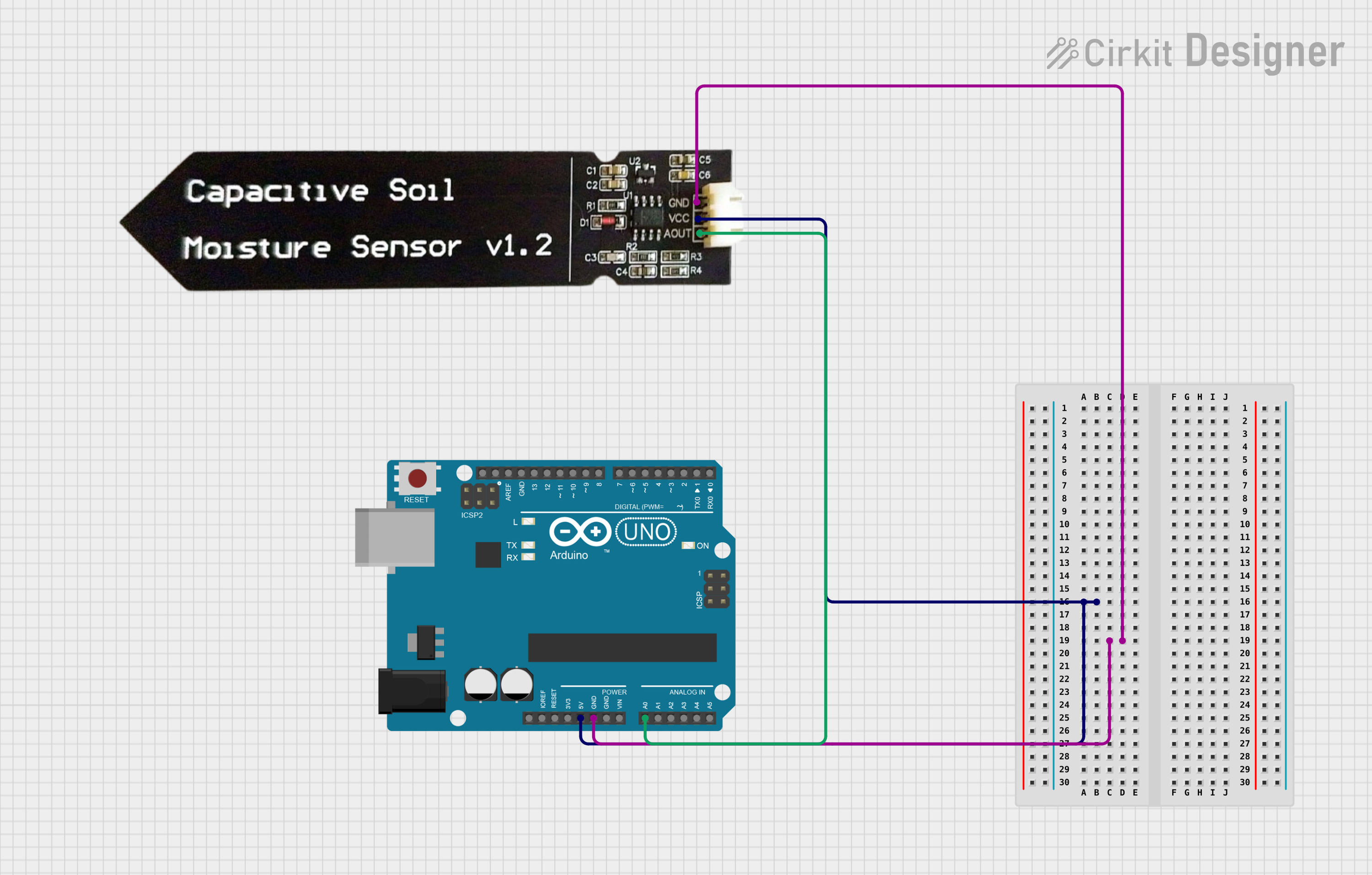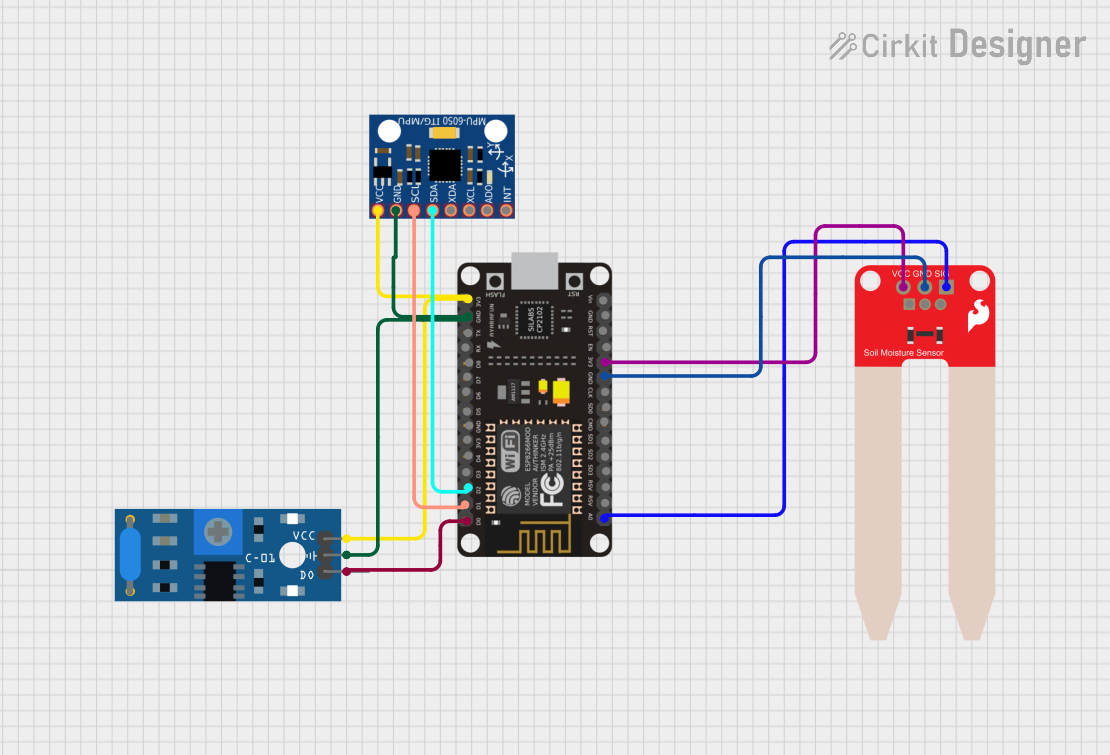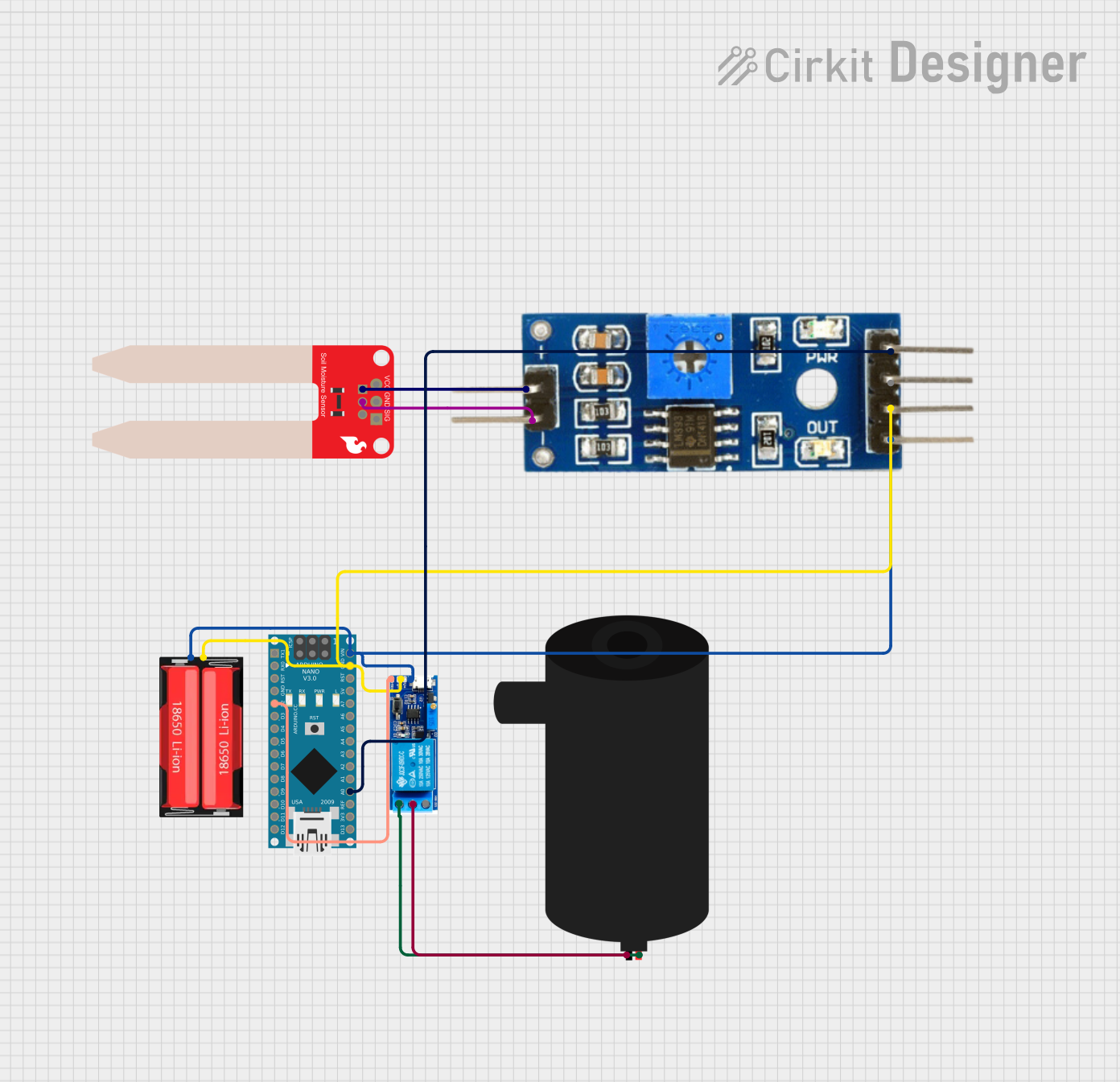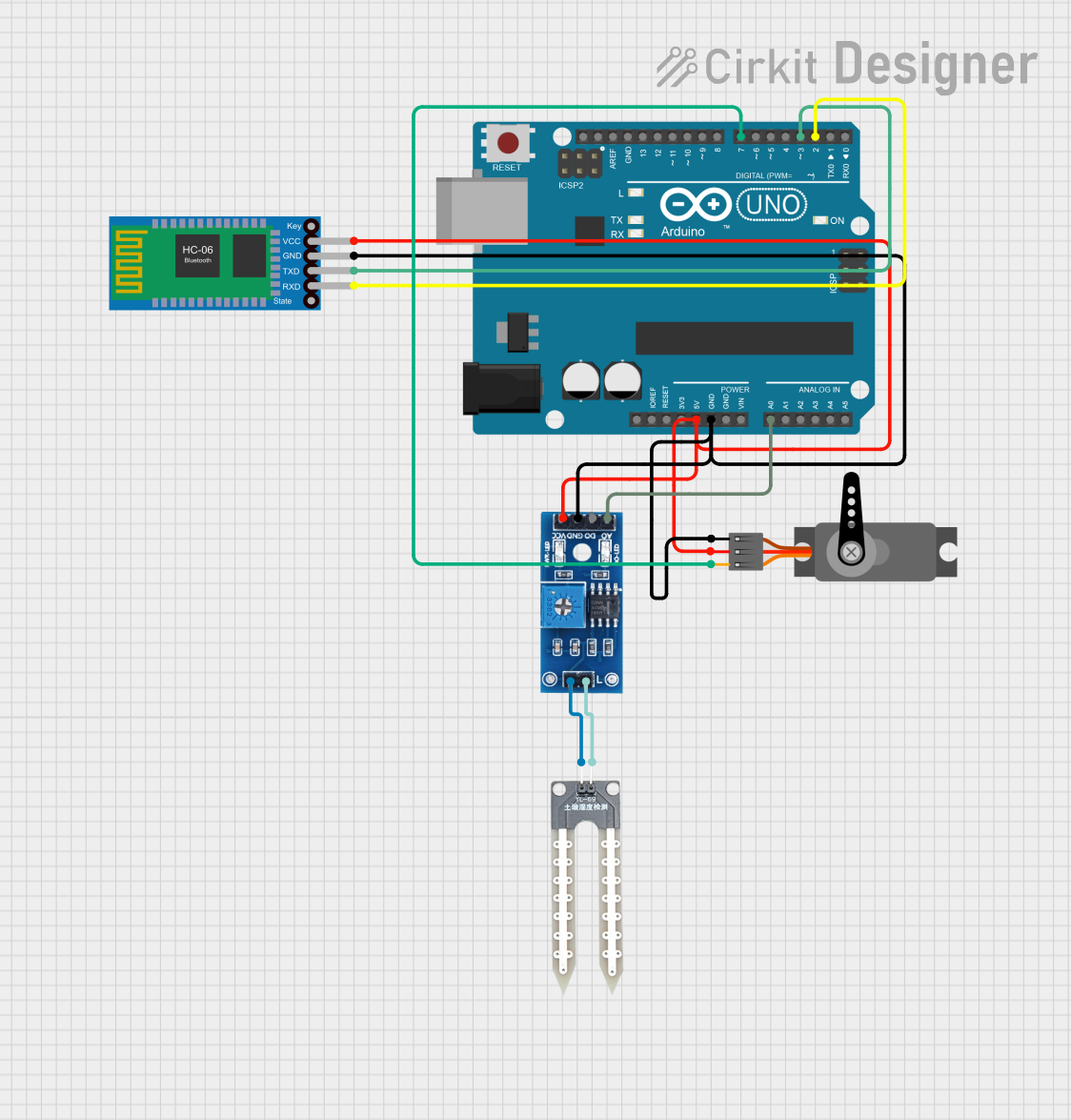
How to Use moisture sensor: Examples, Pinouts, and Specs

 Design with moisture sensor in Cirkit Designer
Design with moisture sensor in Cirkit DesignerIntroduction
The Moisture Sensor (Manufacturer: Moisture Sensor, Part ID: Capacitive Soil) is a device designed to detect the presence and level of moisture in soil or other materials. It operates by measuring changes in capacitance caused by varying moisture levels. Unlike resistive moisture sensors, capacitive sensors are less prone to corrosion, making them more durable and reliable for long-term use.
Explore Projects Built with moisture sensor

 Open Project in Cirkit Designer
Open Project in Cirkit Designer
 Open Project in Cirkit Designer
Open Project in Cirkit Designer
 Open Project in Cirkit Designer
Open Project in Cirkit Designer
 Open Project in Cirkit Designer
Open Project in Cirkit DesignerExplore Projects Built with moisture sensor

 Open Project in Cirkit Designer
Open Project in Cirkit Designer
 Open Project in Cirkit Designer
Open Project in Cirkit Designer
 Open Project in Cirkit Designer
Open Project in Cirkit Designer
 Open Project in Cirkit Designer
Open Project in Cirkit DesignerCommon Applications and Use Cases
- Agriculture: Monitoring soil moisture levels to optimize irrigation systems.
- Gardening: Ensuring plants receive adequate water without overwatering.
- Environmental Monitoring: Measuring soil conditions in research or conservation projects.
- Smart Home Systems: Automating plant watering systems in smart gardens.
Technical Specifications
Below are the key technical details for the Capacitive Soil Moisture Sensor:
| Parameter | Value |
|---|---|
| Operating Voltage | 3.3V - 5V |
| Output Signal | Analog Voltage (0-3.3V typical) |
| Current Consumption | < 20mA |
| Measurement Range | 0% (dry) to 100% (fully saturated) |
| Interface Type | Analog |
| Dimensions | ~98mm x 23mm x 3mm |
| Material | Corrosion-resistant PCB |
Pin Configuration and Descriptions
The sensor typically has three pins, as described in the table below:
| Pin | Name | Description |
|---|---|---|
| 1 | VCC | Power supply pin. Connect to 3.3V or 5V from the microcontroller or power source. |
| 2 | GND | Ground pin. Connect to the ground of the circuit. |
| 3 | AOUT | Analog output pin. Outputs a voltage proportional to the soil moisture level. |
Usage Instructions
How to Use the Component in a Circuit
Wiring the Sensor:
- Connect the VCC pin to the 3.3V or 5V power supply of your microcontroller (e.g., Arduino UNO).
- Connect the GND pin to the ground of your circuit.
- Connect the AOUT pin to an analog input pin on your microcontroller (e.g., A0 on Arduino UNO).
Placement:
- Insert the sensor into the soil at the desired depth. Ensure the sensor's sensing area is fully in contact with the soil for accurate readings.
Reading the Output:
- The sensor outputs an analog voltage that corresponds to the soil's moisture level. A higher voltage indicates drier soil, while a lower voltage indicates wetter soil.
Important Considerations and Best Practices
- Avoid Corrosion: Although the sensor is corrosion-resistant, avoid prolonged exposure to waterlogged soil to extend its lifespan.
- Power Supply: Ensure the power supply voltage matches the sensor's operating range (3.3V - 5V).
- Calibration: For precise measurements, calibrate the sensor by testing it in dry and fully saturated soil to determine the voltage range.
- Signal Noise: Use a capacitor (e.g., 100nF) between the AOUT and GND pins to reduce noise in the analog signal.
Example Code for Arduino UNO
Below is an example Arduino sketch to read and display the moisture level:
// Define the analog pin connected to the sensor's AOUT pin
const int moisturePin = A0;
// Variable to store the sensor reading
int moistureValue;
void setup() {
// Initialize serial communication for debugging
Serial.begin(9600);
}
void loop() {
// Read the analog value from the sensor
moistureValue = analogRead(moisturePin);
// Map the sensor value to a percentage (0% to 100%)
int moisturePercent = map(moistureValue, 0, 1023, 0, 100);
// Print the moisture level to the Serial Monitor
Serial.print("Soil Moisture Level: ");
Serial.print(moisturePercent);
Serial.println("%");
// Wait for 1 second before the next reading
delay(1000);
}
Troubleshooting and FAQs
Common Issues and Solutions
No Output or Incorrect Readings:
- Cause: Loose or incorrect wiring.
- Solution: Double-check all connections, ensuring VCC, GND, and AOUT are properly connected.
Fluctuating or Noisy Readings:
- Cause: Electrical noise or unstable power supply.
- Solution: Add a decoupling capacitor (e.g., 100nF) between the AOUT and GND pins.
Sensor Not Responding:
- Cause: Sensor damaged or inserted incorrectly.
- Solution: Inspect the sensor for physical damage and ensure it is properly inserted into the soil.
Readings Do Not Match Soil Conditions:
- Cause: Sensor not calibrated for the specific soil type.
- Solution: Perform calibration by measuring the sensor's output in dry and saturated soil, then adjust the code accordingly.
FAQs
Q1: Can this sensor be used in water?
A1: No, the sensor is designed for soil moisture detection. Prolonged exposure to water may damage the sensor.
Q2: How deep should the sensor be inserted into the soil?
A2: Insert the sensor so that the sensing area is fully in contact with the soil. Avoid burying the entire sensor.
Q3: Can I use this sensor with a 3.3V microcontroller?
A3: Yes, the sensor operates within a voltage range of 3.3V to 5V, making it compatible with 3.3V systems.
Q4: How do I extend the sensor's lifespan?
A4: Avoid leaving the sensor in waterlogged soil for extended periods and clean it periodically to prevent dirt buildup.